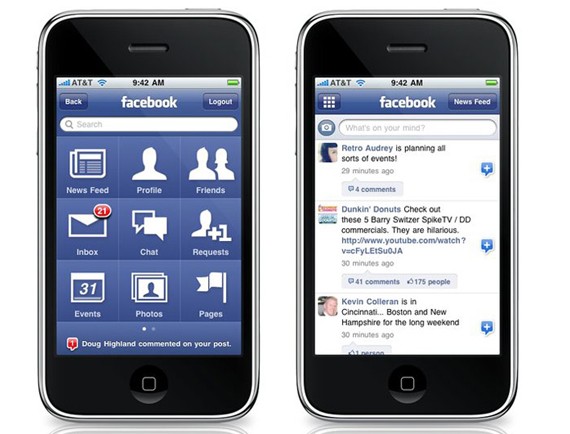Web Design History: From The Beginning

The history of the Internet is short, but so much has changed within that time. It has radically changed how we live our lives. More importantly, the internet has created thousands of jobs that did not exist a decade ago. These include jobs in SEO marketing, online telemarketing, freelance writing, blogging and of course, in web design.
Although web design has only been with us in the past few decades, it has become a large part of our lives. We couldn’t imagine the internet without its animated graphics, fancy text, cool backgrounds, and background music. How did all these come to be?
Internet and Web Design’s Early Beginnings
It is said that the first web site published in the World Wide Web history is sometime in August of 1981. That was some 30 years ago, but the Internet was born in the sixties. It wasn’t as fast as it is today, but it was very efficient in transferring information from one computer to another. Because of its reliability, the internet was used by the military, scientists, educators, doctors and the government for efficient transfer of information within the group. Back then the internet required a computer, a modem and a telephone line.
In the 1990s Mosaic was introduced to the public, which was a free browser program. Mosaic was the first commercial browser that allowed the public access to online content. It was designed by Marc Andreesen and Eric Bina, and originally ran on the Unix system. By 1994 the Mosaic web browser became available to other OS such as Mac, Windows and Amiga OS.
Mosaic Web Browser, the first web browser in internet history (Image by Computer History)
During the 90s, internet connected the world through telephone lines. Documents were viewed in HTML, where everyone can view and access it if they are online. These sites are referred to as first generation sites, they had lots of text, limited colors and graphics with linear layout. It was created for functional communication, and not to entertain users. Since dial-up modems are relatively slow it was impractical to bombard users with lots of graphics–loading would take forever.
Thus, web sites in the first generation were created to maximize loading time for faster data transfer through the slow dial-up modems in the hey day.
HTML – First Generation
The Hypertext concept was created by Ted Nelson during the 60s, but it was used only several decades after. In the 1980s, Tim Berners-Lee invented the Internet and used the hypertext coding language. The World Wide Web came into being in 1994. HTML was the only coding language for web design back then, and back then there wasn’t much freedom when it comes to design.
Because of this, the ‘early web designers’ could only create simple layouts, text, tables and links with little or no graphics. Consider this as the ‘Bronze Age’ of Web Design. Even if web sites were not design-centered back then, developers were already thinking about how they can make their sites more visually appealing.
The W3C or World Wide Web Consortium was created to prevent large companies from monopolizing web design code. If only one company is able to control web coding and design, the story of internet and web design would have been different. Until now, W3C is still responsible for governing the coding techniques, rules and guidelines up to this day. The W3C also updates web designers to any changes they will make. It is important for designers to follow the guidelines set by the body so that the site will work cohesively in search engines and browsers without errors.
W3C sets the web design and coding standards.
After Mosaic, the Netscape web browser soon followed, the browser was released on November of 1994. It wasn’t long before it became the leading browser on the web. It began creating its own tags, and the World Wide Web followed suit.
Second Generation
It was during 1992 to 1994 that other developers started adding their own bits of HTML codes. Thus to prevent confusion of the ever-increasing HTML 1 tags, the HTML 2 was born. The internet is faster now, and web designers are now given more HTML capabilities. Coding has become a bit more complicated, and graphics become more frequent.
Third Generation
In 1995, more HTML tags have emerged and HTML 3 was born. Designers now have an option to use HTML B tables and style sheets. That same year, Microsoft released their own browser, Internet Explorer.
During this time, designers have more freedom to customize and beautify their web design. Third generation web sites can now have colorful or patterned backgrounds. They also had animated images, thanks to .gif. Flash is also introduced, which is a fresh breath of air. It changed the whole landscape of web design, from static to dynamic.
Today’s Modern Web Design: 4th Generation Web Sites
Today’s web sites are classified in the fourth generation. Aside from HTML, web designers can play with other coding tools such as JavaScript, Flash, XML, CSS, etc.
Parasol Island is an interactive website with video, games, sound & graphics
HTML 5 is the 5th revision of the HTML language, and this is the one currently used now. HTML is the solution to most problems and syntax errors found in HTML 4 and XHTML 1.1. HTML 5 attempts to define a markup language for both HTML & XHTML syntax.
HTML 5 also added plenty of new syntax features, including the integration of SVG content, and adding
Amazing website using HTML 5 (Digital Hands)
Because of the remarkable additions, the need for other plugins such as videos, flash and Java is greatly reduced. HTML is improving and moving towards every direction. HTML5 is compatible with various web browsers such as Mozilla Firefox, Apple Safari, Internet Explorer or Google Chrome.
Mobile Web Design
It is estimated that majority of the population will be using smart phones by 2012, with international sales of 2.5 billion phones from 2010-2015. This means that mobile web use will also increase 100%, maybe more. It’s time for companies to invest in mobile design, to make sure their websites are mobile web-friendly.
Mobile web simply makes everything more convenient. Mobile web design answers the two keys to better web experience: usability and availability. As it goes along the smartphone trend, mobile web design allows content to load faster. Developers think outside the box by providing applications and games that will be applicable to the iPhone, Blackberry or Android.
Mobile web design is about simplification. Everything is simplified to fit a smaller screen. Navigation is easier, design is simpler, and using Flash is currently not possible.
Image by Gizmodo
No two web sites are alike. As a result of immense technology advancements, web designers can now experiment with videos, graphics, images, animation and even games. Aside from that, developers must also think about SEO marketing to make sure their web site appears on the top pages of search engines. These elements are all implemented into the web design, to make it fun and interactive. Web design is no longer as a mere communication tool. The internet is now an arena for entertainment with boundless capabilities.
And for our web designers, the internet is an ever-expanding playground.
- Login om te reageren


















